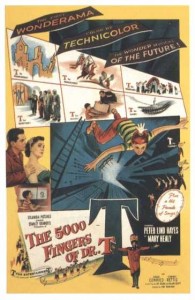 Goodness what is this monstrosity.
Goodness what is this monstrosity.
This film is quite hard to explain. Made on a fairly small budget in 1953, the film marks the only live-action piece Dr. Seuss was ever associated with during his lifetime. Many snippets look like a Busby Berkeley musical on drugs. It was a commercial flop at the time of its release but has since gained a cult-like following.
The story tells via a massive dream sequence (which is really roughly 90% of the film) where a young boy imagines that the world has been taken over by a mad piano teacher whose ambition is to eventually make the piano the only instrument. Other instruments (and their players) are banished to Dr. Terwilliker’s (Hans Conreid) dungeons deep below his institute. The institute’s sole purpose is the training of future pianists.
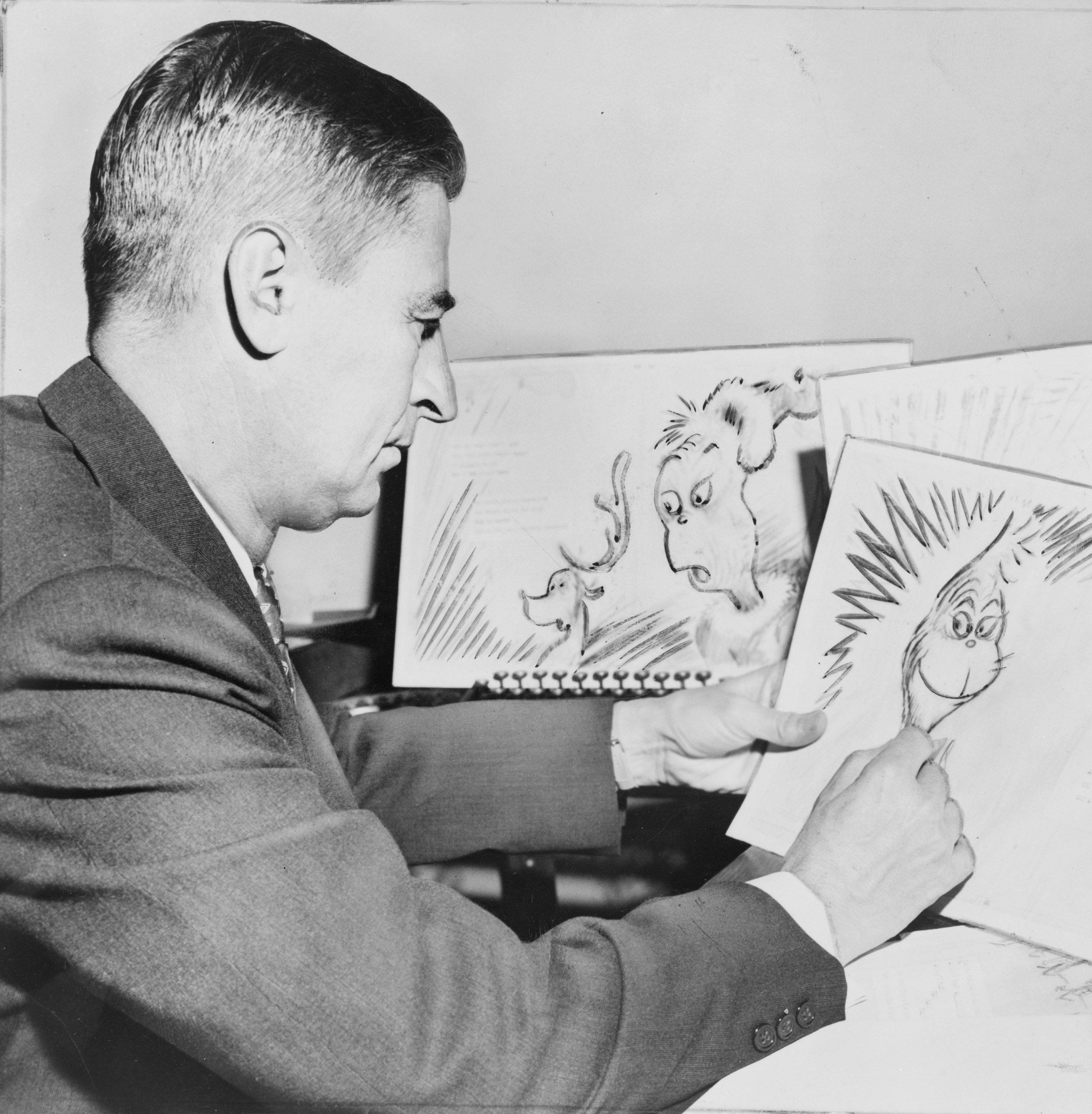 Along the way there are several song and dance numbers, many of which are quite surrealistic in nature. Unless you are a true fan of Dr.Suess (who wrote the screenplay and the lyrics for all the songs) you will find that these routines only serve to slow down the already sluggish action. You will get a good feel for Dr. Suess’ affinity for weird self-created words, odd rhymes, and alliteration however.
Along the way there are several song and dance numbers, many of which are quite surrealistic in nature. Unless you are a true fan of Dr.Suess (who wrote the screenplay and the lyrics for all the songs) you will find that these routines only serve to slow down the already sluggish action. You will get a good feel for Dr. Suess’ affinity for weird self-created words, odd rhymes, and alliteration however.
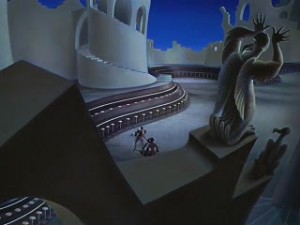 The sets and décor of the film are fairly minimal, but does show the same style as many of Dr. Suess’ books. Some favorite motifs are long winding stairways without any railings, large stuffed hands pointing the way (marked “in”, and “out”, for example). And no that isn’t your eyes; there is hardly a straight line in the sets which isn’t slightly off skew. The beanie of the child both shows this touch too, both in the font on its front and the yellow vinyl hand which protrudes from the top. The mad Dr’s costumes also are quite zany, but they always seem to be somewhat short of the mark.
The sets and décor of the film are fairly minimal, but does show the same style as many of Dr. Suess’ books. Some favorite motifs are long winding stairways without any railings, large stuffed hands pointing the way (marked “in”, and “out”, for example). And no that isn’t your eyes; there is hardly a straight line in the sets which isn’t slightly off skew. The beanie of the child both shows this touch too, both in the font on its front and the yellow vinyl hand which protrudes from the top. The mad Dr’s costumes also are quite zany, but they always seem to be somewhat short of the mark.
Although geared for children, most of the meaning of the film will be completely missed by this target audience. Parents, however, will see quite a bit lurking just below the surface.
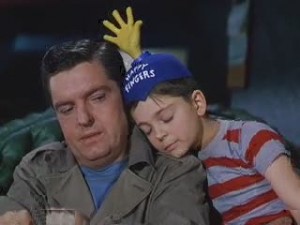 Looking through the eyes of the main boy (played by Tommy Rettig), you are exposed to the child’s natural fears of being without a father and looking for a new father figure in a true father’s absence. Here the new potential father figures are the mad doctor himself and a plumber whose job it is to install sinks in the institute.
Looking through the eyes of the main boy (played by Tommy Rettig), you are exposed to the child’s natural fears of being without a father and looking for a new father figure in a true father’s absence. Here the new potential father figures are the mad doctor himself and a plumber whose job it is to install sinks in the institute.
You also become aware as well of the child’s fear of loosing his mother to one of these new (and perhaps poorly suited) father figures. The mother throughout the film is in a trance under the mad doctor’s control- helping him to construct his institute.
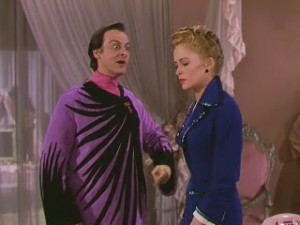 On another level one is reminded of Dr. Suess’ overriding liberal viewpoint. As a concerted foe of all the ‘isms’ – Nazism, fascism, communism, socialism, Dr. Suess neatly equated the mad doctor with a totalitarian dictator (given the film’s date, this would most likely be Stalin) and the prospective students as his would be citizenry.
On another level one is reminded of Dr. Suess’ overriding liberal viewpoint. As a concerted foe of all the ‘isms’ – Nazism, fascism, communism, socialism, Dr. Suess neatly equated the mad doctor with a totalitarian dictator (given the film’s date, this would most likely be Stalin) and the prospective students as his would be citizenry.
One forgets that Dr. Suess’ book Yertle the Turtle is much in the same vein, just with Hitler rather than Stalin as the target. However, in Yertle the Turtle the illusion is very blunt as early printings of the book have Yertle with a toothbrush mustache, leaving his real identity beyond a doubt.
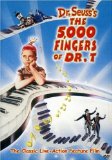 The viewer should also realize that the repeated references to atomic things is merely reflective of the times in which the film was shot- most of America was busy digging holes to hide in during this time.
The viewer should also realize that the repeated references to atomic things is merely reflective of the times in which the film was shot- most of America was busy digging holes to hide in during this time.
Unless you are perversly into the wacky world of Dr. Suess and are a completist, ignore the cultists and go with the original reviewers of 1953. This simply isn’t all that great.